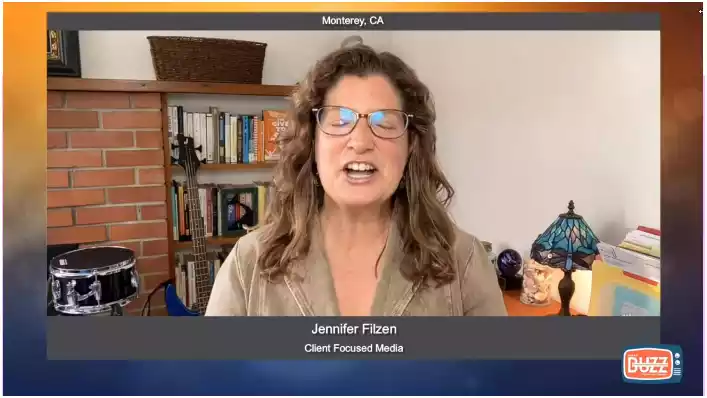Streamlining Prior Authorization for Efficient Healthcare Delivery
Discover how prior authorization for efficient healthcare delivery can transform healthcare delivery, reducing delays, cutting costs, and ensuring patients receive timely, high-quality care. Dive into the benefits and best practices for an efficient authorization process.

Imagine waiting in lengthy queues for assistance as a thing of the past, and support agents are liberated from monotonous inquiries. The healthcare sector is experiencing significant advancements in efficiency, particularly with processes like express scripts prior authorization. This critical step ensures that patients receive necessary medications without unnecessary delays, streamlining operations for countless providers. Given the many solutions on the market, how does one select the most suitable one? Let’s delve into the features, use cases, advantages and disadvantages, and much more about these essential systems.
Let’s start!
Table of Contents
Prior Authorization for Efficient Healthcare Delivery

Introduction
Prior authorization is an approval process mandated by health insurers to verify the necessity and cost-effectiveness of certain healthcare services, medications, and procedures. It entails a series of steps where healthcare providers must obtain approval from insurers before administering treatments to patients. This process aims to avoid treatments and regulate healthcare expenses. It has also become a significant source of frustration due to inefficiencies and bureaucracy. According to the American Medical Association, prior authorizations incur a cost of $3.68 billion for providers in administrative expenses and result in considerable delays in patient care.
The Significance of Streamlining Prior Authorization
Impact on Patient Care
Inefficient authorization processes can lead to delays in patient care. Postponing treatment approvals may worsen patients’ conditions, reduce their quality of life, or even result in life-threatening situations. Improving these procedures ensures patients receive the help they need promptly, leading to improved health outcomes.
Financial Impact
Healthcare providers need help with efficient prior authorization processes. The added administrative tasks result in expenses and take focus away from patient well-being. Health insurers also bear increased costs due to the authorization procedures. Simplifying these workflows can alleviate pressures on both providers and payers by reducing overheads and ensuring timely reimbursements.
Compliance with Regulations
Regulatory standards require authorizations to safeguard safety and ensure quality care. However, these rules can complicate the process. Effective prior authorization systems meet demands while streamlining operations to reduce complexity and administrative burdens.
Obstacles in the Current Setup
Administrative Strain
The current manual process for authorizations demands time and effort from healthcare providers, taking away valuable time that could be spent on direct patient care. This administrative burden introduces inefficiencies in healthcare delivery.
Delayed Care for Patients
Inefficiencies in the existing system often result in delays in receiving treatments. Waiting for authorizations can worsen patients’ conditions, necessitating complex and costly interventions later. Speeding up the authorization process is crucial for providing efficient medical treatment. One major issue in the authorization system is the need for consistent standards among insurance companies. Each insurer may follow its rules, paperwork, and methods, ensuring clarity and consistency. Establishing procedures simplifies the process.
Good communication between healthcare providers and insurers is crucial for the operation of the authorization process. Yet obstacles to communication, like guidelines and inadequate information sharing, frequently cause delays and rejections. Improving communication protocols can minimize misunderstandings and speed up approvals.
Ways to Make the Process More Efficient

Implementing procedures is an effective method of streamlining authorization. Healthcare providers can decrease confusion and administrative tasks by establishing requirements and processes across payers. Standardization ensures that everyone involved is on the same page, leading to a process.
Utilizing Technology for Automation
Incorporating technology can significantly improve the efficiency of authorization procedures. Electronic health records (EHR) systems and health information exchanges (HIE) can be used to automate the submission and tracking of authorization requests. Automation helps reduce mistakes, speeds up approvals, and enables healthcare providers to focus on patient care.
I'm very thankful for Portiva who I know is looking after my practice while I'm gone the virtual assistants can manage prescription refills, documents they can triage patients and just kind of answer administrative questions and they can handle a lot on their own. But also, they're very good about contacting me if there's any emergency or anything I need to attend to. So I'm very thankful for Portiva they can help almost any provider almost anywhere and it really allows for some good work-life balance as I'm getting to experience right now at my family farm so I'm very thankful for Portiva and I'm very happy to use their services"

Board Certified Family Medicine Physician

Portiva's Virtual Medical Assistant - I have all the support I need. There's somebody checking my email, any patient messages. Patients are still able to schedule and handle any scheduling issues and any kind of billing that needs to still go through. Portiva hands handles it all for me. I have support i have somebody that I can access 24/7 pretty much. It's all very seamless. If somebody has an emergency or needs a medication called in. I know that the va's at portiva will handle that for me.

Board Certified Family Medicine Physician

Strengthening Collaboration Between Providers and Payers
Effective collaboration between healthcare providers and payers is crucial for an authorization process. Establishing lines of communication and regular interactions between both parties can promote understanding of requirements and quicker resolution of issues. Working together to develop practices and address obstacles can lead to an efficient system.
Importance of Policy Changes and Regulatory Reforms
Policy changes and regulatory reforms can make the prior authorization process more efficient. Government bodies can mandate the adoption of procedures and technology for automated approvals. Advocating for policy changes, prioritizing patient well-being, and decreasing tasks can improve processes and lead to a more streamlined process.
In Conclusion
Simplifying the authorization procedures is crucial for improving healthcare delivery and outcomes and reducing administrative burdens. By adopting processes using technology for automation, fostering collaboration between providers and payers, and advocating for policy changes, the healthcare system can significantly enhance the efficiency of authorizations. These transformations offer a future where patients receive care, providers face administrative challenges, and the healthcare system operates more seamlessly. Ultimately, ongoing efforts to streamline authorization processes are vital for the success of healthcare delivery.
Ensuring top-notch patient care requires assessing and enhancing the process. By implementing an authorization system, healthcare professionals can dedicate their attention to the most critical task: delivering excellent patient care.
To learn more about benefits verification that can enhance your medical practice. Discover more about Portiva and unlock a world of possibilities by visiting our homepage today!
- Tailored approaches for streamlining prior authorization in healthcare
- Prior authorization process for optimal patient care
- Prior authorization support in patient care management
- Assessing the economic consequences of prior authorization
- Strategic prior authorization for better operations
- Prior authorization policies
- Prior authorization for medical treatments
- Economic trade-offs of prior authorization policies
- Navigating the prior authorization process as a patient
- Simplifying the prior authorization process
- Precertification technology and patient satisfaction
- Protecting patients with prior authorization technology
- Mitigating risks in prior authorization procedures
- Prior authorization with custom solutions
- Simplified prior authorization assistance
- Methods of risk management for prior authorization
- Why quality assurance is essential for effective prior authorization processes
- Ensuring excellence in prior authorization
- Preauthorization technology for office managers


